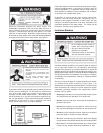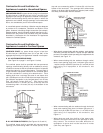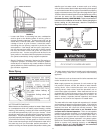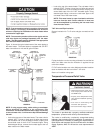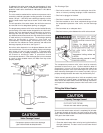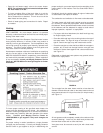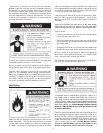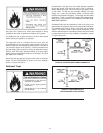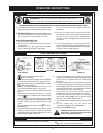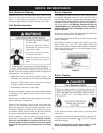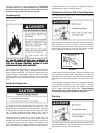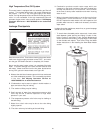
18
Use pipe joint compound or teflon tape marked as being
resistant to the action of petroleum (Propane [L.P.]) gases.
The appliance and its gas connection must be leak tested
before placing the appliance in operation.
The appliance and its individual Shut-off valve shall be
disconnected from the gas supply piping system during any
pressure testing of that system at test pressures in excess of
1/2 pound per square inch (3.5kPa). It shall be isolated from
the gas supply piping system by closing its individual manual
Shut-off valve during any pressure testing of the gas supply
piping system at test pressures equal to or less than 1/2 pound
per square inch (3.5kPa).
Connecting the gas piping to the gas control valve of the water
heater can be accomplished by either of the two methods,
shown in Figures 20 and 21.
Sediment Traps
Contaminants in the gas lines may cause improper operation
of the gas control valve that may result in fire or explosion.
Before attaching the gas line be sure that all gas pipe is clean
on the inside. To trap any dirt or foreign material in the gas
supply line, a drip leg (sometimes called a sediment trap)
must be incorporated in the piping. The drip leg must be readily
accessible. Install in accordance with the Gas Piping section.
Refer to the current edition of th
e National Fuel Gas Code,
ANSI Z223.1/NFPA 54.
A sediment trap shall be installed as close to the inlet of the
water heater as practical at the time of water heater installation.
The sediment trap shall be either a tee fitting with a capped
nipple in the bottom outlet or other device recognized as an
effective sediment trap. If a tee fitting is used, it shall be installed
in conformance with one of the methods of installation, shown
in Figures 20 and 21.
FIGURE 20. GAS PIPING WITH FLEXIBLE CONNECTOR.
FIGURE 21. GAS PIPING WITH ALL
BLACK IRON PIPE TO GAS CONTROL.
• Contaminants in gas lines can
cause fire or explosion.
• Clean all gas piping before
installation.
• Install drip leg in accordance
with NFPA 54.




